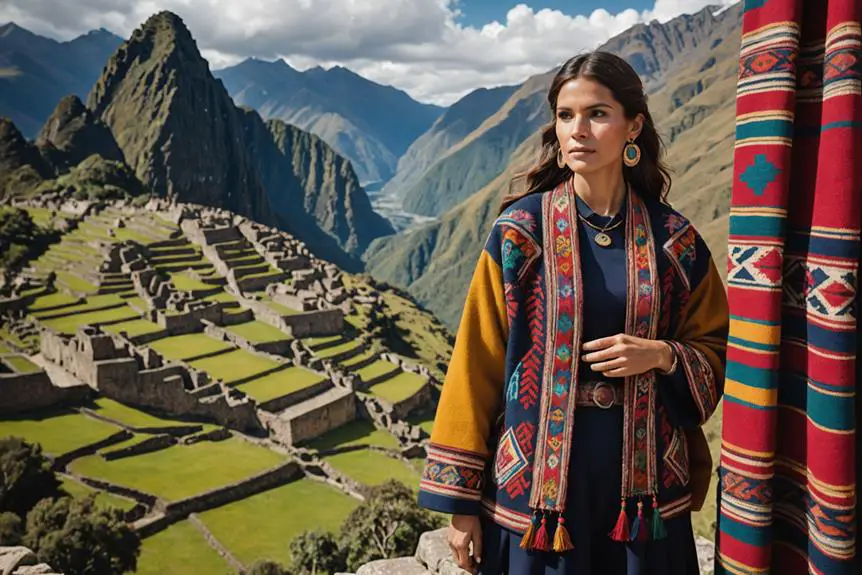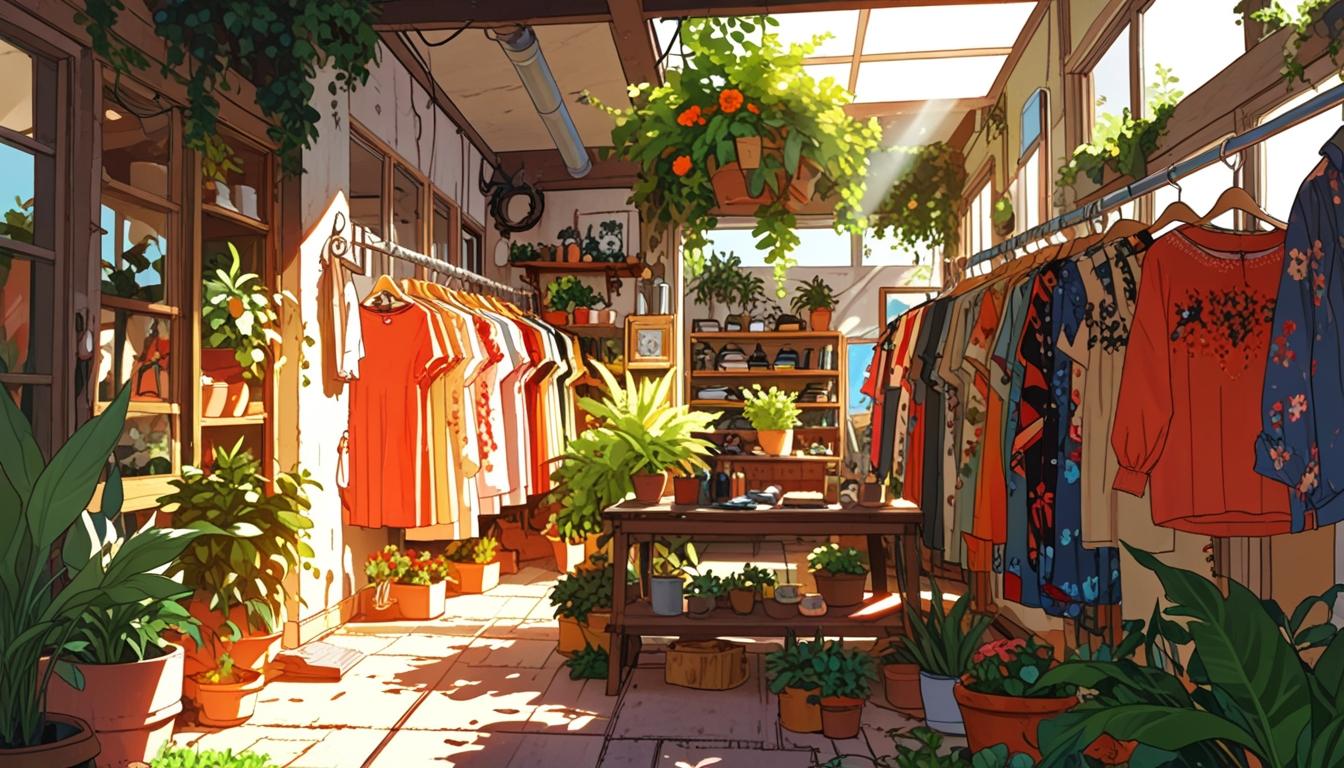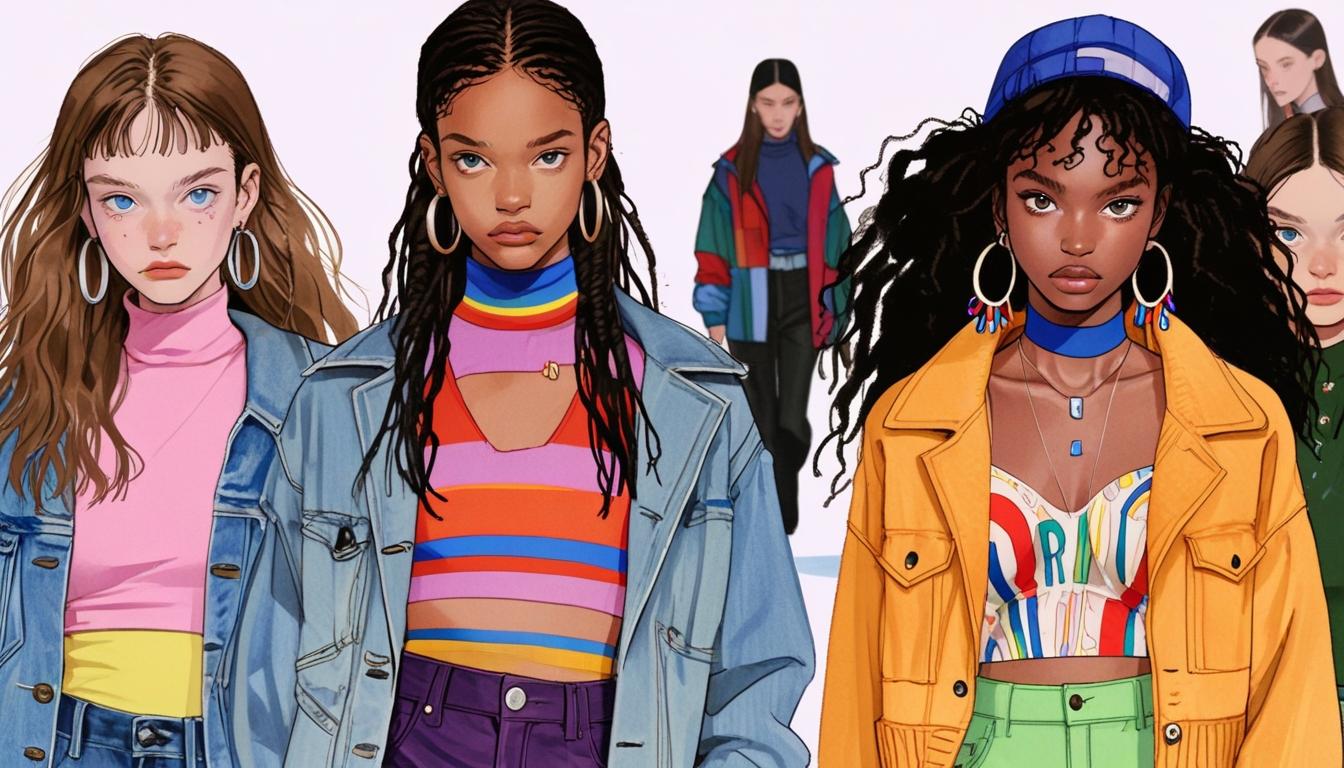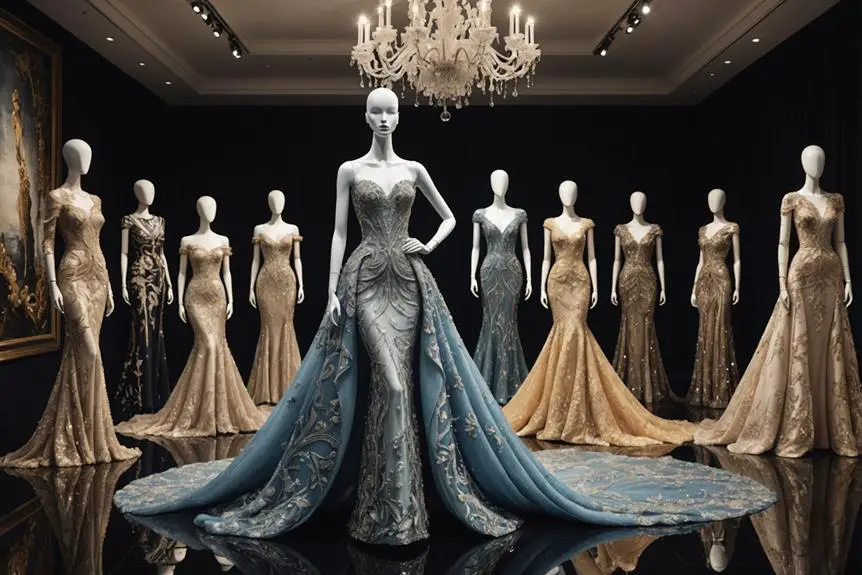When you think of old Peruvian fashion, you've got to remember the deep roots of craftsmanship and tradition! Brands like Kero, founded in 2001, and Ana.G, kicking off in 2005, blend historical techniques with modern flair. Then there's Ayni, which works with artisans to sustain Peruvian heritage through textiles. And don't forget about Amarena, known for their unique straw accessories! Each brand tells a story of culture, resilience, and creativity, making them stand out. Isn't it amazing how fashion connects us to history? Stick around, and you'll uncover even more about the fabulous world of Peruvian fashion!
Historical Significance of Peruvian Fashion
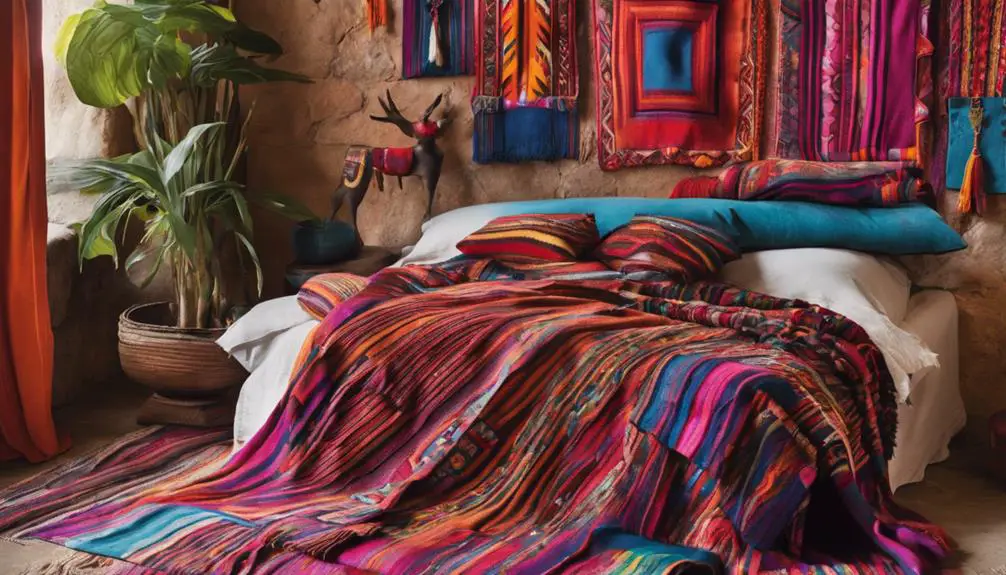
Peruvian fashion's historical significance runs deep, intertwining ancient traditions with modern influences. Did you know that the roots of Peruvian textiles stretch back to pre-Inca cultures? That's right! Textiles made from cotton date all the way back to 1000 BC. These early artisans showcased incredible craftsmanship, weaving intricate patterns that tell stories of their cultural identity.
When the Spanish conquered in 1532, they added European styles to the mix, resulting in a vibrant blend of traditional and colonial garments. You can still see this blend today, especially in the Sacred Valley of Cusco, where traditional clothing is a proud symbol of cultural heritage. Isn't that cool?
Organizations like Threads of Peru are stepping up to guarantee these textile traditions don't fade away. They work hard to promote the amazing skills of local artisans, helping to keep those ancient techniques alive. So, the next time you see a beautiful Peruvian piece, remember, it's not just fashion—it's a story woven through time, connecting the past to the present. Don't you just love how something as simple as cotton can carry so much history?
Pioneering Brands in Peruvian Fashion
How do pioneering brands in Peru shape the landscape of fashion today? Well, let's explore! These brands are like the superheroes of Peruvian fashion, showcasing the amazing talent of local designers. Take Kero for example, established in 2001. They use luxurious alpaca fibers and pima cotton to create stunning garments that reflect Peru's beautiful landscapes. Isn't that cool?
Then, there's Ana.G, founded in 2005. They mix graphic prints and hand-painted motifs, and their intricate handbags made by local artisans are to die for! And don't forget Delosantos, which popped up in 2019, focusing on sustainable materials like hemp denim. How awesome is it that they're caring for the planet?
Amarena, founded in 2018, specializes in unique straw accessories, preserving traditional weaving and dyeing techniques. Finally, Ayni is all about sustainability, working with over 300 artisans to keep those ancient textile skills alive.
These pioneering brands aren't just about fashion; they're breathing life into local craftsmanship while making stylish pieces you'll want in your wardrobe. So, why not support Peruvian designers and their incredible work? You'll feel good wearing their creations!
Cultural Influences on Fashion Design
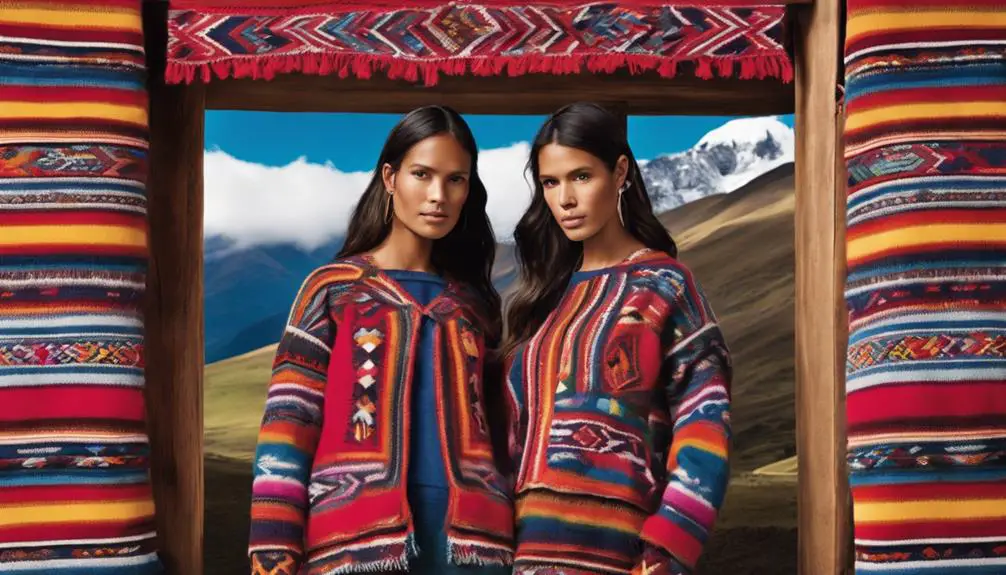
Cultural influences play an essential role in shaping fashion design in Peru, with a rich tapestry of ancient textile traditions dating back to pre-Inca times. Imagine wearing a piece that tells a story, right? Designers, especially those appealing to younger generations, often weave in local myths and histories, creating clothing that's not just stylish but meaningful.
Take Annaiss Yucra, for instance. Her collections feature the retama flower, symbolizing resistance and resilience, mixing nature with modern vibes. Then there's Kero, drawing inspiration from Peru's stunning landscapes, giving us designs that feel both traditional and fresh.
Younger generations are particularly drawn to these unique blends of old and new. They love the idea of wearing clothes made from indigenous materials like soft alpaca fibers and pima cotton, connecting them to Peru's rich textile heritage. It's a way to look good and feel good about supporting local culture and sustainability!
Sustainable Practices in Fashion Industry
Sustainability has become a central focus in the fashion industry, especially among brands that draw inspiration from rich cultural traditions. You might be surprised to learn how many Peruvian fashion brands are leading the way in eco-friendly practices! They're embracing natural dyeing techniques and using vegetable leather, which really cuts down on environmental harm.
These designers are all about traceability, sourcing local materials like alpaca wool. This not only strengthens supply chains but also supports local economies—talk about a win-win! Plus, brands like Ayni are collaborating with artisans, growing their partnerships from 4 to nearly 20. That's a huge boost for economic sustainability, especially for local communities.
And let's not forget about empowering women in the textile industry, which is valued at over $7 billion in Latin America! Workshops for local artisans help preserve traditional techniques while enhancing skills. It's a beautiful way to honor cultural heritage and promote sustainable livelihoods. So next time you think about fashion, remember that sustainability is more than a trend—it's a meaningful movement! How cool is that?
Evolution of Textile Techniques
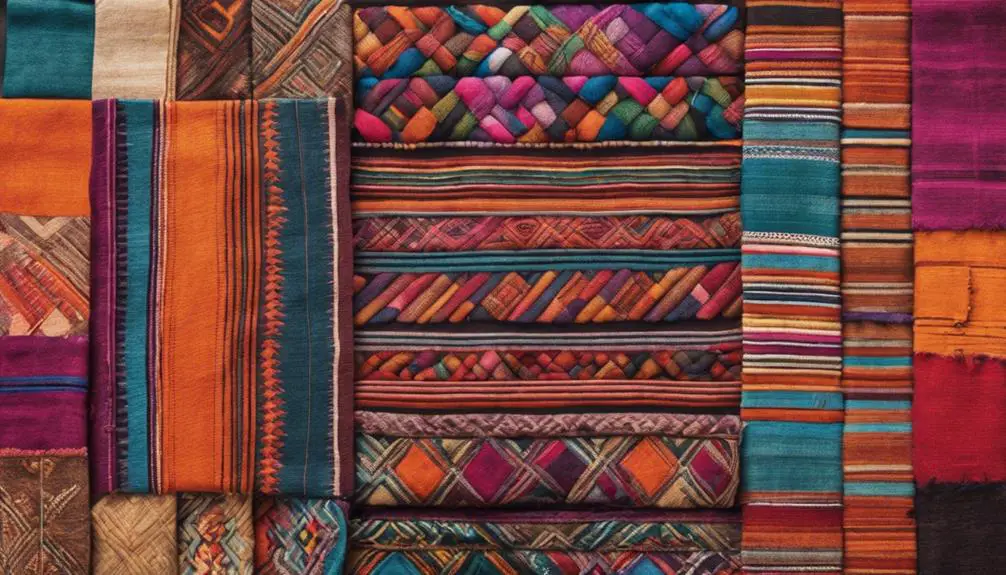
As you explore the evolution of textile techniques in Peru, you'll discover a rich tapestry of history that dates back to 1000 BC, when pre-Inca cultures like the Moche and Chavin began to master sophisticated weaving practices. Can you imagine the intricate designs they created? The Paracas civilization, from around 900 BC to 400 AD, was famous for its high-quality textiles, showcasing advanced craftsmanship that still impresses today.
Then there were the Nazca weavers, who flourished from 200 BC to 600 AD, using innovative techniques to craft textiles that reflected their cultural identity—how cool is that? Fast forward to the 16th century, when European textile techniques blended with these traditional methods, giving birth to a unique Peruvian fashion scene.
Nowadays, many contemporary Peruvian brands are digging deep into this rich heritage. They're incorporating ancestral techniques, like natural dyeing and weaving, while also embracing cotton production. It's a beautiful fusion of old and new, preserving cultural identity while appealing to modern tastes. So next time you admire a piece of Peruvian clothing, think about the centuries of artistry woven into it!
Contemporary Designers to Watch
Peru's fashion scene is buzzing with contemporary designers who are redefining the country's rich textile heritage. You'll want to keep an eye on Annaiss Yucra (A.Y), founded in 2018. Their garments, averaging $300, pack a punch with themes of resistance and revolution, using plant-based materials and recycled fabrics. How cool is that?
Then there's Kero, established in 2001. They spotlight artisanal techniques with a focus on alpaca fibers and pima cotton. Their collections reflect Peru's stunning landscapes, with prices ranging from $35 to $730—something for every budget!
Don't forget about Ana.G! Since 2005, they've been blending graphic prints with hand-painted motifs, offering refined silhouettes and intricate handbags made by local artisans, averaging around $400. Fancy, right?
Delosantos burst onto the scene in 2019, mixing natural and fantastical designs with innovative materials like hemp denim. Their prices range from $80 to $1,080—definitely worth checking out!
Lastly, Amarena specializes in stunning straw accessories, incorporating local weaving and dyeing traditions. With bags averaging just over $200, you can rock contemporary style rooted in culture. Exciting times for Peruvian fashion!
Future Trends in Peruvian Fashion

The future of fashion in Peru is set to be vibrant and innovative, with designers increasingly embracing eco-friendly materials and practices. You'll see a wave of sustainability in the fashion industry, as more brands focus on using recycled fabrics and plant-based alternatives. Isn't that cool? It's not just about looking good anymore; it's about doing good for our planet!
You'll also notice a strong emphasis on traditional textiles and artisanal techniques. By blending these elements into modern designs, brands are preserving their cultural heritage while chasing global trends. This fusion creates unique pieces that tell a story—your outfit could literally have a history!
Plus, collaborations between local artisans and fashion brands are on the rise. This means not only are you getting stylish clothes, but you're also supporting local economies and enhancing traditional skills. How great is that?
With international interest in Peruvian fashion growing, you can expect local brands to step up their game in self-promotion and branding. They want to make a mark on the global stage, and you'll want to be part of this exciting journey! So, keep an eye out; fashion in Peru is just getting started!
Frequently Asked Questions
What Is the Most Famous Peruvian Brand?
Imagine a tapestry, each thread representing a brand's cultural influence. In this vibrant scene, Escvdo stands out, weaving sustainability and tradition into modern fashion, enchanting your senses and showcasing Peru's rich heritage in every stitch.
What Is the Oldest Famous Fashion Brand?
When you think of the oldest famous fashion brand, you're likely considering how heritage influences design. It's fascinating how brands blend traditional craftsmanship with modern aesthetics, creating a unique identity that resonates across generations.
What Did Ancient Peruvians Wear?
Imagine vibrant colors and intricate patterns. Ancient Peruvians wore garments crafted from natural fibers, showcasing textile techniques like backstrap weaving. They donned the lliqulla and unku, adorned with symbolic motifs reflecting their rich cultural identity.
Is the Peruvian Connection Made in Peru?
Yes, the Peruvian Connection is made in Peru. You'll appreciate its cultural authenticity, as it showcases local artisans' skills and sustainable practices, blending modern designs with rich Peruvian textile traditions for a truly unique experience.
